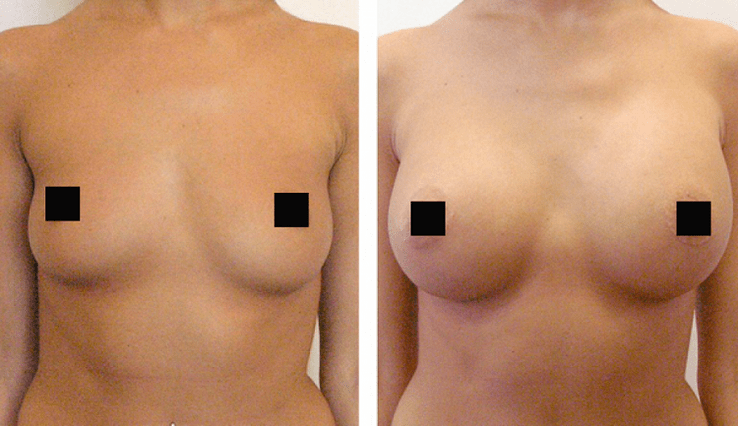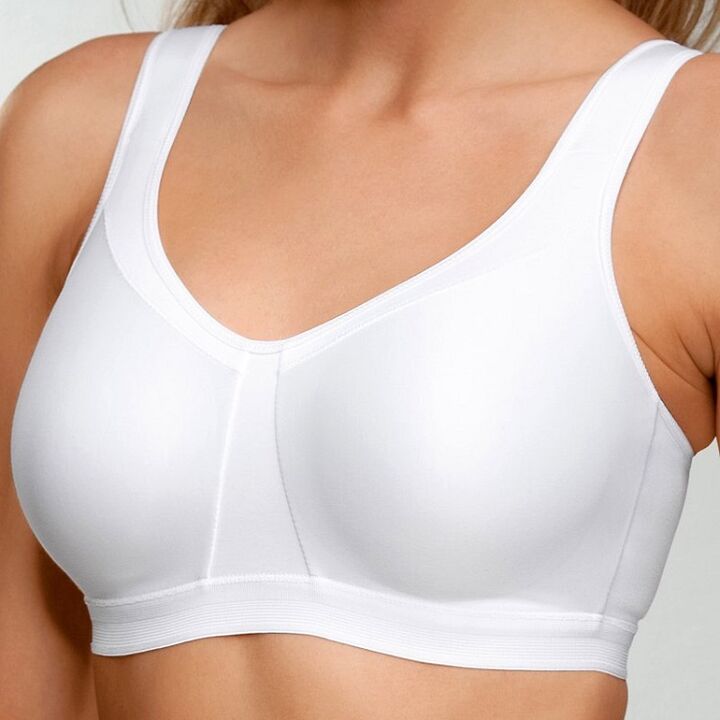Breast augmentation with hyaluronic acid is considered the safest method today. Before the advent of this method, mammoplasty was used.
The surgery was performed on the chest, into which the implants were inserted. The chest grew to some size, but it looked unnatural.
At the same time, no one can give a full guarantee that the operation would take place without complications. The advent of this method of breast augmentation exposes women to fewer risks.

How are breasts augmented with hyaluronic acid?
Many have heard of hyaluronic acid. Someone knows it as the main constituent of synovial fluid, which provides lubrication of articular cartilage to connective tissue, and someone has heard of it from the world of cosmetology.
In particular, it has become known for maintaining the firmness and elasticity of the skin. How does this happen?
Hyaluronic acid has the unique ability to attract and retain water like a sponge, providing volume and hydration to tissues.
Thanks to this feature, this polysaccharide has been used successfully in plastic surgery for breast augmentation.
This technique allows you to get the desired breast size without using surgery.
Breast augmentation is performed with gel injections, respectively dermal fillers based on hyaluronic acid.
Since the molecules of this polysaccharide are large and hold a large amount of water, it is similar in consistency to a thick gel. To enlarge the breast one size, approximately 300 ml of gel is required.
How is the procedure performed? The procedure is painful, so it is performed under local anesthesia. Before the operation, all the necessary tests are taken and the day of the operation is set.
Non-surgical breast augmentation lasts approximately 40 minutes. The drug is injected into the chest using a cannula.
This is a special tube that resembles a feather and replaces a needle. At the injection site, piercings remain, to which cosmetic sutures are applied.
The breast is given exactly the shape the patient wants it to have. It is very important that the procedure is performed by an experienced specialist, because not all doctors are able to insert the gel correctly into the breast.
After the procedure, on days 2 and 3, unpleasant pain and burning sensation appear in the area of the mammary glands. Breast skin rash, hematoma formation, itching are also possible. All these symptoms will soon disappear.
Recovery period
Within 1 month, the patient should not expose the upper body to physical activity. Both heat and excessive cooling are contraindicated.
You can not put pressure on the mammary gland, that is, massage it or sleep on it, as the gel may shift and the breast is deformed.
To support the bust, it is recommended to wear a compression garment. The recovery period depends on the age of the patient, the quality of the epidermis, the amount of gel injected and the lifestyle.

Duration of effect
Fillers are divided into absorbable and non-absorbable. For breast augmentation, the first type of injections are mainly used, as they are based on hyaluronic acid, which dissolves quickly.
The effect of its impact is temporary - from 6 months to a year. Non-absorbable injections are dangerous from the development of various complications, so they are practically not used.
Botox breast augmentation is often confused with dermal fillers. The difference is that Botox preparations are harmful to the body as they contain botulinum toxin.
A hyaluronic acid gel is a filler that increases tissue volume.
What kind of breast fillers are used?
There are many different hyaluronic acid fillers available for breast augmentation.
Since they differ from each other in their properties, a specialist should choose them, based on the characteristics of the patient's skin and mammary glands.
Necessary it is necessary to consider another point: the gel with hyaluronic has an antidote. It is a special enzyme called hyaluronidase. He is able to destroy the unsuccessful result.
Contraindications and complications
Are there any contraindications to breast augmentation with hyaluronic acid? There are a number of cases when it is impossible to use a gel for breast augmentation.
Contraindications include any breast neoplasm, both benign and malignant.
Such surgeries are not performed even when a woman is planning a pregnancy, as the absorbed remnants of the gel can squeeze the milk ducts during lactation. In case of autoimmune diseases, interventions in the mammary gland are contraindicated.
When performing an ultrasound scan of the mammary glands or X-ray examination, the cysts do not differ from the accumulation of fillers and are often confused.
This makes it difficult to examine the organ for possible neoplasms. Palpation also makes diagnosis difficult.
If the breasts become inflamed, surgery and antibiotics will be required for treatment.
For the sake of perfection, many women risk their health by not paying attention to contraindications.
The effect after the introduction of hyaluronic acid is undeniable, and the result is tangible: the breast becomes elastic and healthy, and the skin is much younger.
But this result is temporary, so you need to repeat the procedure. Such interventions can lead to negative consequences.
The pros and cons of the procedure
This method is not suitable for women who have organ prolapse (ptosis). This procedure will only make the problem worse.
Hyaluronic acid dissolves over time, but before that, any procedure related to exposure to the mammary glands should not be applied.
The fact that this procedure does little to damage the mammary gland is a great advantage, but after administering the drug to the mammary glands, due to the swelling of hyaluronic acid, the soft tissues, vessels and ducts are congested.
The drug, occupying a certain space in the chest, acts on nearby tissues.
Why is breast augmentation with hyaluronic acid banned in France? This method does not pose a particular health risk or threat.
But as a precaution in this country they decided to impose a ban, as after the introduction of hyaluronic acid, the diagnosis of malignant tumors is very complicated.


























